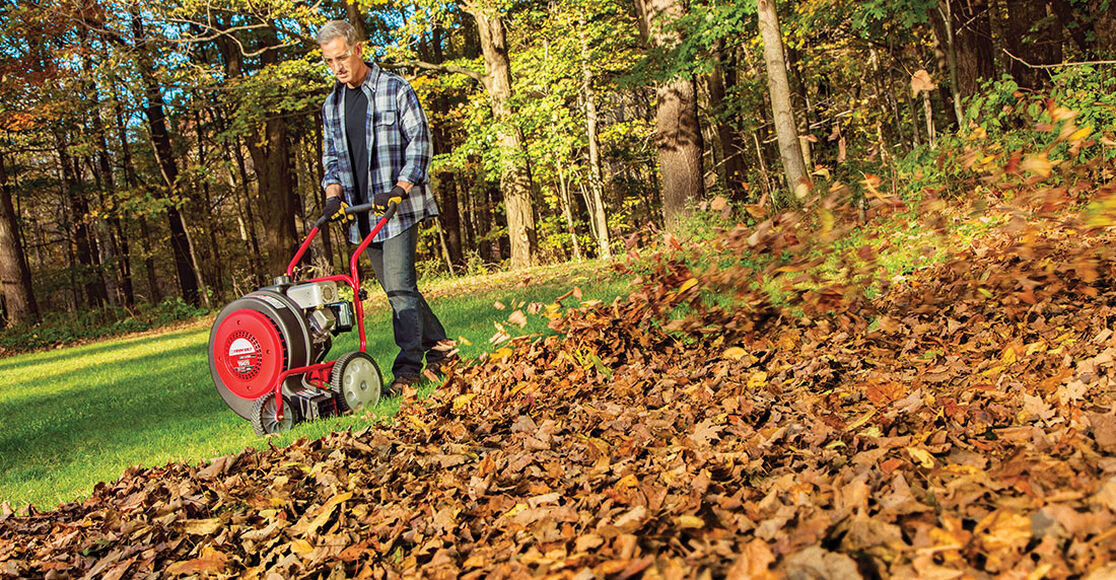Though it may not always be the most popular yard maintenance task, leaf removal is one of the most necessary to keep your outdoors looking well-kept and your lawn happy and healthy. And knowing it's a job you have to repeat consistently during the latter half of the year, finding easier and faster ways to remove leaves from your lawn is always a plus.
Depending on your lawn size and personal preferences, there are several leaf cleanup tools and methods you can use to help you efficiently cross this to-do off your fall chores list.
Rakes and Brooms
Handheld rakes and brooms (for hardscaped areas) still work well if you have only a small area to cover. Look for wide rakes to use for cleanup jobs in open areas, and save your smaller rakes for getting leaves out of flower beds and cramped areas.
Leaf Blowers
There are plenty of options for your leaf removal needs, so make sure you know exactly what type of leaf blower features and power are essential to complete the project.
As a rule of thumb, small- to medium-sized yards call for handheld leaf blowers. These types of blowers can vary in power, but are useful for clearing leaves from tight areas around the yard. Larger yards tend to call for backpack blowers or wheeled leaf blowers as they produce greater power for heavy duty cleanup jobs.
To clear leaves efficiently from your yard entirely, place a tarp over a designated area on your lawn. Blow the leaves into a pile on the tarp, gather up the corners, and leave the bundle out by the curb for pickup according to your city's green waste rules, or move to a compost pile or vegetable garden if you're looking for an eco-friendlier option.
Lawn Mowers
Mowing over leaves might seem like a messy approach to leaf cleanup, but it's great for your lawn. As you run your mulching mower through the lawn, leaves are finely chopped up and left on top of grass as a natural fertilizer and mulch for the winter months; however, you should never mow piles of leaves.
A few other safety requirements to keep in mind include:
- Equip yourself with the right parts. You should always use a mulching blade and/or the mulch plug designed for your mower.
- Increase mowing height. Adjust the cutting height to the highest position.
- Balance leaf distribution. Spread any piles or clumps of leaves out around your yard to allow for better distribution of the mulch.
- Don't rush the process. The slower you run over the leaves, the better the mulching. Re-cutting the mulched leaves chops them into smaller pieces which degrade quicker.
- Mulch dry leaves. Wet leaves do not mulch as well and can cause clogging.
- Review and follow all safety instructions in your operator's manual. If your mower clogs, disengage the blade, turn off the engine and wait for all movement to stop before unclogging. Also watch for debris buildup and clean off as needed - especially around the muffler and engine.
Chipper Shredder Vacuum
A chipper shredder vacuum is exactly what it sounds like, a device that vacuums and shreds leaves and other small debris into a bag. Functioning much like a walk-behind mower, the vacuum simply sucks up leaves and deposits them in a bag as it's pushed across your lawn. If your landscape consists of bushes and hard-to-reach places, the hose attachment can easily clean around those areas; for yards that need small fallen branches removed, a dedicated chipping chute can quickly break down branches up to 1.5-in in diameter. With an 8:1 reduction ratio, you can use the broken-down material as mulch to fertilize and insulate beds or add them to a compost pile.
